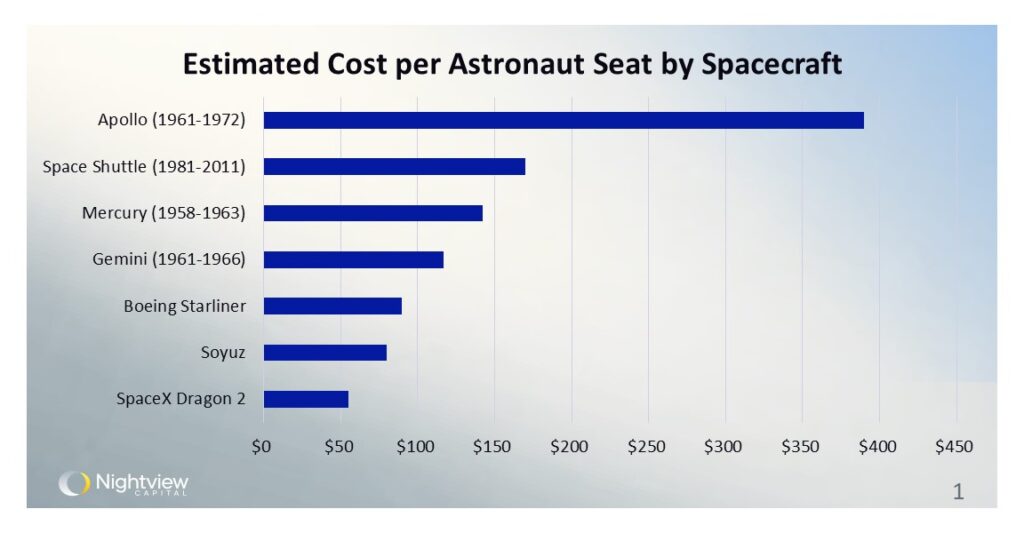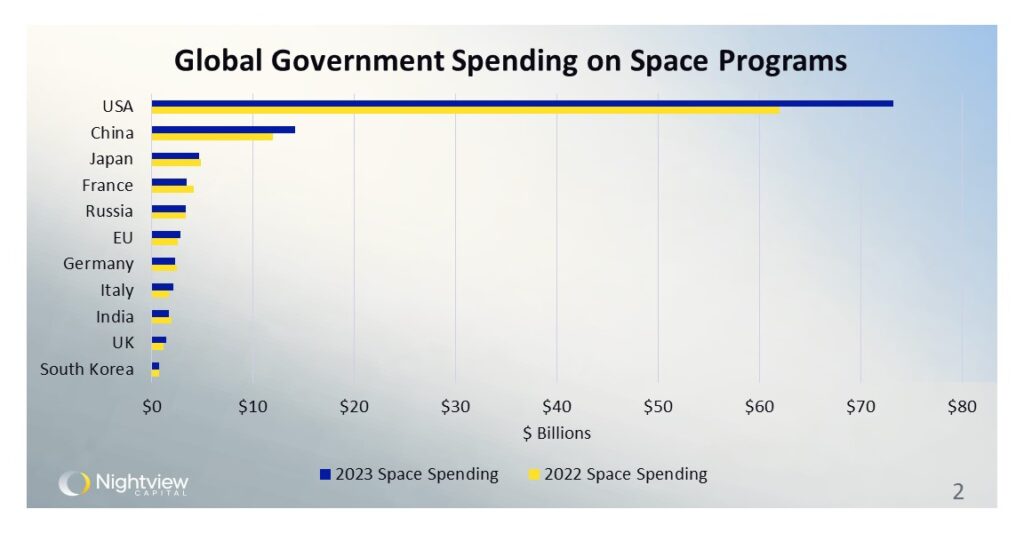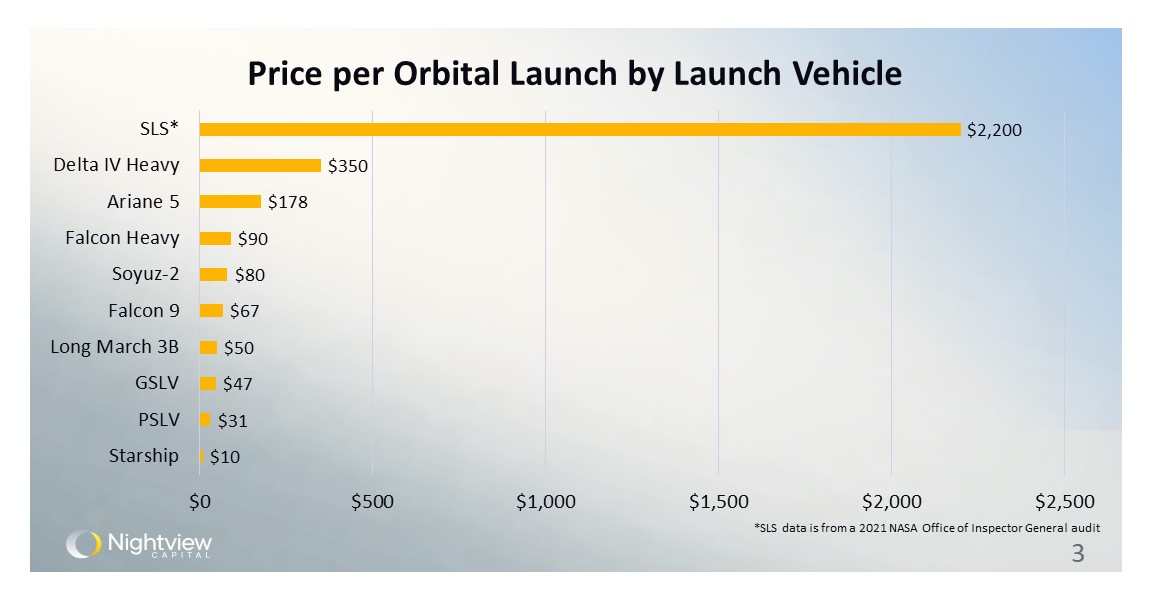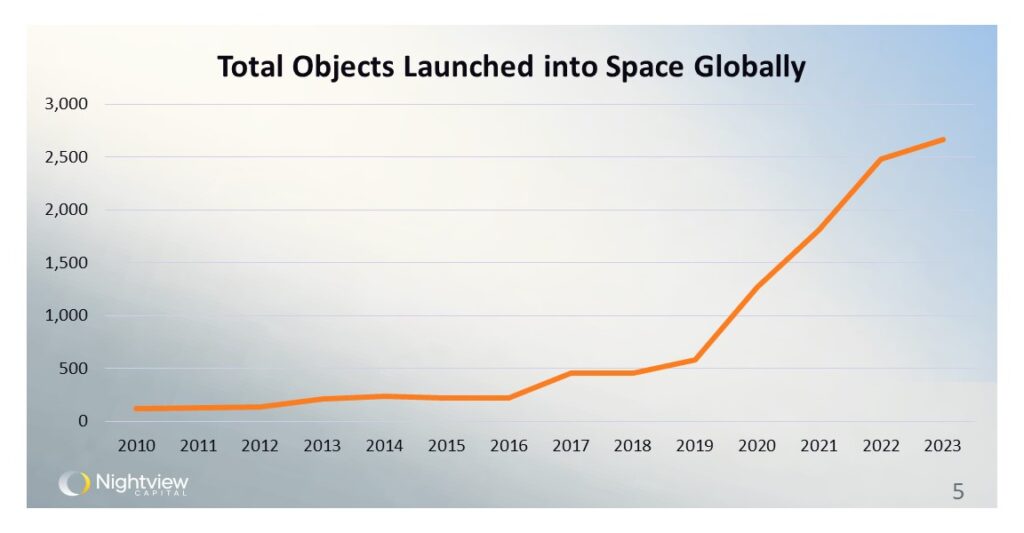
Welcome to Nightpixels, a visual blog about investing, business, and technology.
Nightpixels is published each week by Nightview Capital Research Analyst Cameron Tierney. Follow him here on X and Linkedin.
Sign up to receive weekly Nightview Capital updates below.
Error: Contact form not found.
The Cost to Send Astronauts to Space Is Dropping Quickly

As this chart illustrates, the cost to send an astronaut to space has reduced over time. As newer launch technologies were developed since spaceflight’s early days with the Apollo program, spacecraft with lower cost-to-orbit were realized. Notably, SpaceX’s Dragon 2 spacecraft stands out as the most cost-efficient option in today’s market at around $50 million per astronaut seat. The lower costs of contemporary spacecraft such as Soyuz and Boeing Starliner also reflect the benefits of technological progress and competition in the aerospace industry, making space travel more accessible. These reductions underscore how improved launch technology has drastically cut costs over time, enabling more frequent and affordable missions to send people to space, a critical aspect of humanity’s exploration of the cosmos.
Source
The U.S. Government Still Outspends on Space Programs—by Light Years

Without a clear economic incentive to develop spaceflight, governments were critical to developing the technology in the twentieth century. The private sector was unable to flourish in this industry because of a lack of business models. Today, the U.S. government still spends the most out of global governments on space programs. The chart shows global governmental spending on space programs in 2022 and 2023. The U.S. leads the pack by a considerable margin, spending over $70 billion in 2023. China follows with substantial investment, though it’s not even close to half of the U.S. expenditures. Top spenders like the U.S. and China increased their spending from 2022 to 2023, underscoring a growing global focus on space exploration and technological advancement. This investment surge signifies strategic priorities and the competitive race in space capabilities among leading nations. Yet, orbital space today is a very different playing field than the 1960s.
Source
Private Sector Innovation is Driving Orbital Launch Costs Down

As technologies have improved, a fledgling space economy has sprung up. Private companies own and operate their own orbital satellites, offering Internet, TV, and other forms of connectivity to consumers and businesses on the ground — never mind potential future business lines like tourism and mining. As such, private sector investment in spaceflight has boomed.
This chart compares the cost of various orbital launches, revealing a wide range in expenses. NASA’s Space Launch System (SLS) is the most expensive at $2.2 billion per launch, whereas the private sector’s leading candidate, SpaceX’s Starship, is projected to be the most economical at just $10 million for a launch. These launch vehicles and their costs are not completely comparable because payloads will differ, and in the case of Starship, it is still in development. But, the stark difference in costs between the public and private sector offerings highlights the potential for significant savings with newer technologies and private sector innovation. These cost efficiencies could continue to revolutionize access to space, making it more viable for various scientific, commercial, and exploratory missions.
Source
Orbital Launch Rates are Increasing Exponentially

As launch tech has improved and costs have come down, the FAA has been forced to increase the number of orbital launch licenses it approves over time. This chart shows the annual number of FAA-licensed orbital launches in the U.S., depicting an ostensibly exponential upward trend, particularly post-2020. The rapid increase in launches, surpassing 120 in 2023, indicates a booming space industry driven by private companies like SpaceX.
Source
Objects Launched to Space are Also Going Parabolic

The private sector and increased launch rates has also caused the number of objects launched into orbital space to increase dramatically. The chart shows the exponential growth in the number of objects launched into space globally. This surge, reaching nearly 3,000 objects in 2023, underscores the rapid expansion of private space activities. Specifically, SpaceX’s Starlink low-Earth orbit (LEO) Internet service is likely a major driving force behind the trend. Starlink is an Internet Service Provider by satellite, but the nature of the network is such that it requires thousands of satellites in LEO. The data signifies a new era in space utilization, and we expect the trend to continue.
Source
